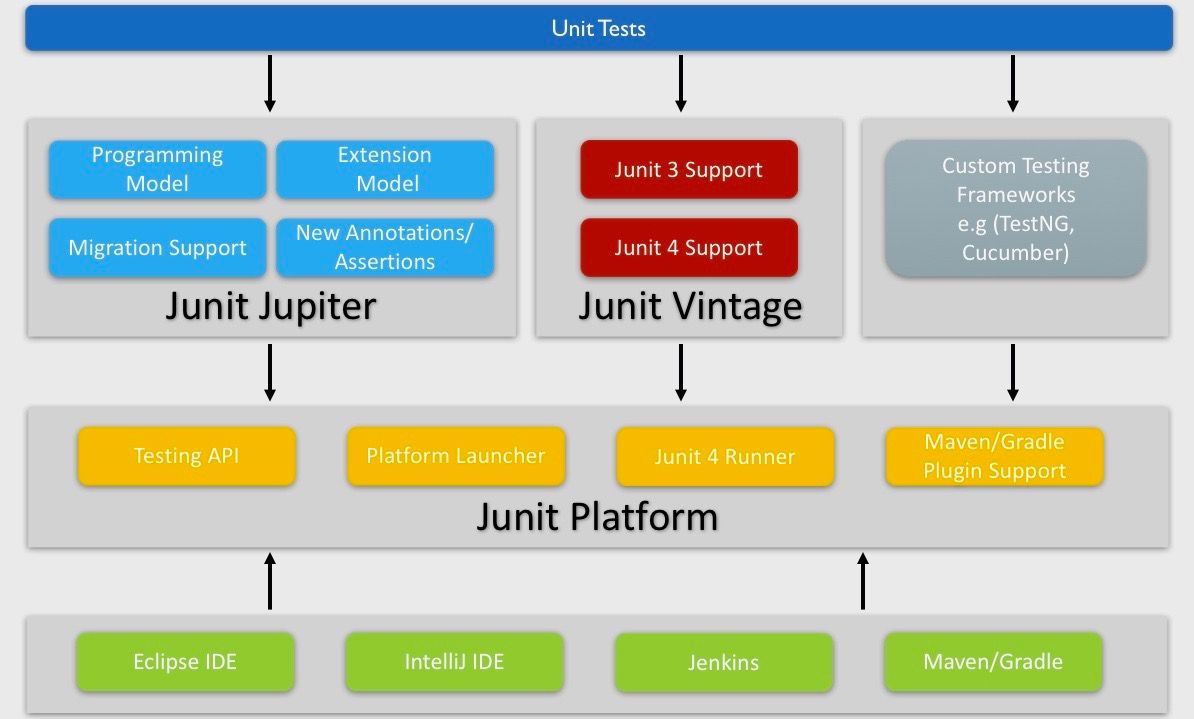Junit 5 Architecture
This lesson describes Junit 5 architecture, along with their core functionality.
Junit 5 Architecture has three main components -
-
Junit Platform
It provides a core foundation to help launching testing frameworks on JVM. It acts as an interface between JUnit and its clients such as build tools (`Maven and Gradle`) and IDE's (`Eclipse and IntelliJ`). It introduces the concept of a `Launcher` which external tools use to discover, filter, and execute tests.
It also provides the TestEngine API for developing a testing framework that runs on the JUnit platform. Using TestEngine API, 3rd party testing libraries such as Spock, Cucumber, and FitNesse can directly plug in and provide their custom TestEngine.
-
Junit Jupiter
It provides a new programming model and extension model for writing tests and extensions in Junit 5. It has a whole new annotation to write test cases in Junit 5. Some of the annotations are `@BeforeEach`, `@AfterEach`, `@AfterAll`, `@BeforeAll` etc. It implements TestEngine API provided by Junit Platform so that Junit 5 test can be run. -
Junit Vintage
The term `Vintage` basically means **classic**. Thus, this sub-project provides extensive support for writing test cases in JUnit 4 and JUnit 3. Thus, backward compatibility is been provided by this project.
JUnit 5 Architecture
Quiz on JUnit 5 Architecture
Q
JUnit 4 test cases are run on JUnit Vintage Engine.
A)
True
B)
False
Quiz on JUnit 5 Architecture
Q
JUnit 5 test cases are run on JUnit Jupiter Engine.
A)
True
B)
False
In the next lesson, we will learn to create our first JUnit 5 test case.
